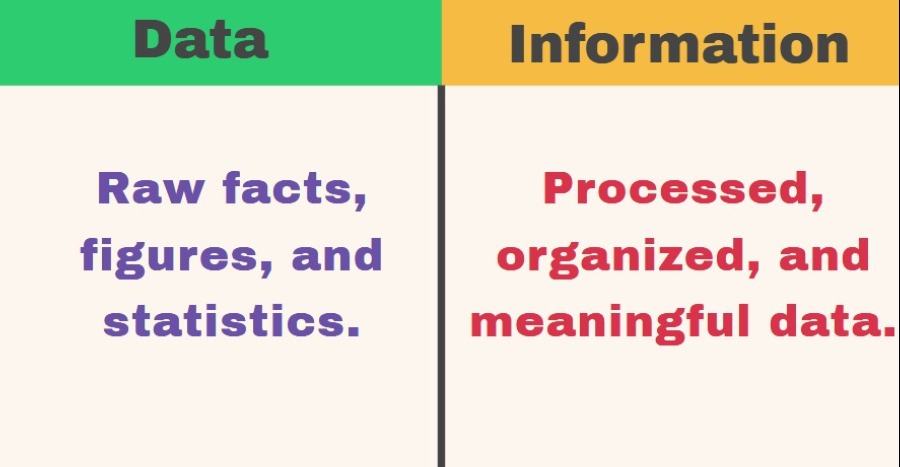In information technology and decision-making, the terms “data” and “information” are often used interchangeably. However, it is crucial to understand the fundamental distinctions between these two concepts. Data and information play distinct roles in our understanding of the world, and recognizing their disparities is essential for effective analysis and decision-making.
What is data?
Data refers to raw facts, figures, and statistics. It can exist in various forms, such as numbers, text, images, or even audio. Data is often unprocessed, unorganized, and lacks any specific structure or context. Examples of data include stock prices, customer names, and survey responses.
What is Information?
Information is the result of processing and organizing data to make it meaningful and valuable. It provides context, interpretation, and structure to the raw facts and figures. When data is transformed into information, it becomes more structured, relevant, and useful for decision-making. Information is typically presented in a structured format, such as reports, summaries, charts, or graphs.
Difference between data and information in a tabular form
| Aspects | Data | Information |
|---|---|---|
| Definition | Raw facts, figures, and statistics. | Processed, organized, and meaningful data. |
| Nature | Unprocessed, unorganized, and random. | Processed, organized, and structured. |
| Context | Lacks context or interpretation. | Provides context and interpretation. |
| Purpose | Used as an input for analysis. | Used to make informed decisions or take action. |
| Format | Can be structured or unstructured. | Usually presented in a structured format. |
| Examples | Temperature readings, stock prices. | Reports, summaries, charts, and graphs. |
| Characteristics | Objective and neutral. | Subjective and influenced by interpretation. |
| Transformation | Can be transformed into information. | Data is processed to create information. |
| Value | Raw and potentially meaningless. | Meaningful, valuable, and relevant. |
| Communication | Requires interpretation and analysis. | Communicates knowledge and insights. |
Purpose of Information:
Information is meant to be utilized in decision-making processes. It enables individuals or organizations to comprehend complex situations, identify trends, assess risks, and explore opportunities. By transforming data into information, we can extract actionable insights and generate valuable knowledge.
Maximizing Business Potential with Data and Information
Businesses can leverage data and information to make informed decisions, understand customers, improve operational efficiency, drive product development, optimize marketing efforts, manage risks, measure performance, gain a competitive advantage, and utilize predictive analytics. By analyzing data and extracting meaningful insights, businesses can enhance their decision-making processes, personalize customer experiences, identify areas for improvement, stay ahead of market trends, and proactively plan for the future. With the right data-driven strategies, organizations can achieve growth, streamline operations, and drive innovation in today’s competitive business landscape.
Read More:
Differences Between Assessment and Evaluation

Leave a Reply